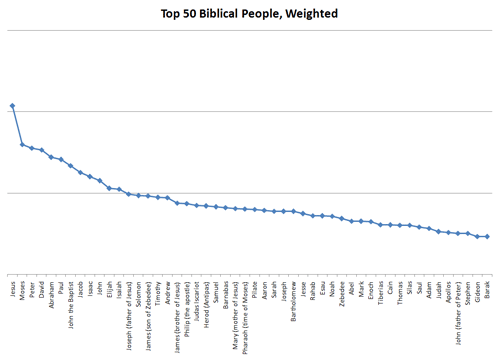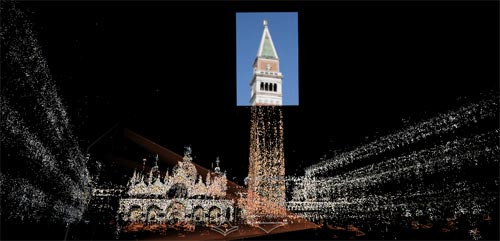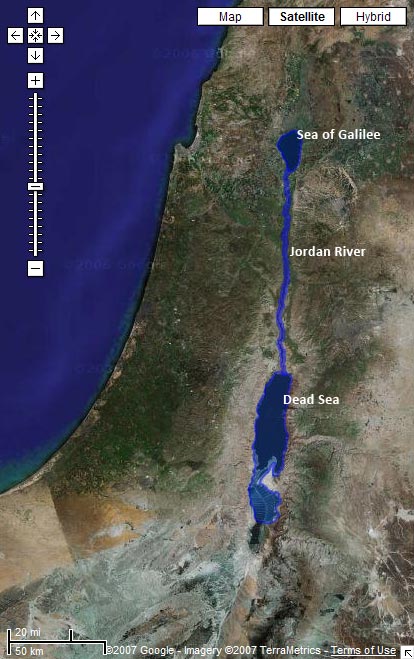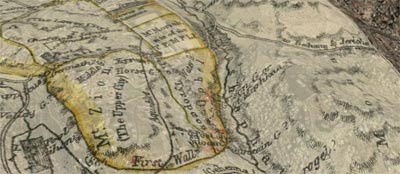Sean at Blogos is sharing his work on a Bible Knowledgebase he’s creating. He recently wrote about how to prioritize people in the Bible for the project.
The method he discusses combines the number of times people are mentioned with the number of books they’re mentioned in.
I propose a different method—it’s not better or worse, just different.
The idea is, first, to rank occurrences by chapter popularity: weighting an occurrence in John higher than an occurrence in Zephaniah, for example. (I don’t have anything against Zephaniah, but people don’t read it as often as John.) Second, I want to rank people associated with certain prominent people more highly.
Method
The ESV blog published a list of the most popular verses in the Bible. They also share their figures on how often people look at each chapter. I used this data as the basis for the popularity figure.
I then subjectively picked twelve of the most prominent people in the Bible (in my opinion): Abraham, Jacob, Joseph, Moses, Samuel, Saul, David, Solomon, Elijah, Jesus, Peter, and Paul. Names that appear in the same chapter with these people got extra weight.
Then it was just a matter of going through all the names and weighting them based on the chapters they appeared in. I didn’t have access to Sean’s person-disambiguation data, so I needed to make some approximations, but the general trend holds.
Results

Twenty-three of the fifty people overlap between Sean’s list and my list. Let’s look at the ones that don’t overlap:
| On My List |
On Sean’s List |
| John the Baptist |
Joshua |
| Joseph (father of Jesus) |
Hezekiah |
| James (son of Zebedee) |
Josiah |
| Andrew |
Ahaz |
| James (brother of Jesus) |
Simeon |
| Philip (the apostle) |
Manasseh |
| Judas Iscariot |
Uzziah |
| Herod (Antipas) |
Jeremiah |
| Barnabas |
Zedok |
| Mary (mother of Jesus) |
Eleazar |
| Pilate |
Balaam |
| Sarah |
Joab |
| Bartholomew |
Nebuchadnezzar |
| Rahab |
Dan |
| Zebedee |
Levi |
| Abel |
Nun |
| Mark |
Phinehas |
| Enoch |
Sihon |
| Tiberias |
Merari |
| Cain |
Absalom |
| Thomas |
Reuben |
| Silas |
Benjamin |
| Apollos |
Issachar |
| John (father of Peter) |
Naphtali |
| Stephen |
Asher |
| Gideon |
Ephraim |
| Barak |
Zebulun |
I can’t honestly say that either of these lists is superior overall. I like parts of my list better than Sean’s and parts of his better than mine.
Here’s the raw data (Excel 2007 file) if you want to look at it in more detail.










